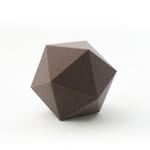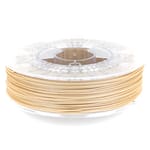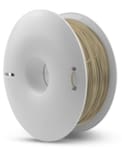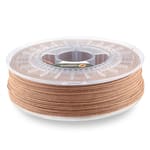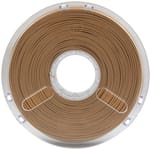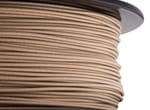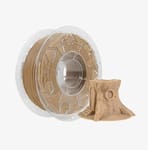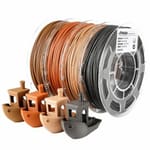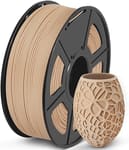The advent of wood 3D printing was around 2012, when sawdust was first added to PLA filaments for a wood-like appearance. The early experiments, however, showed that sawdust wasn’t the best solution for wood 3D printing or wood filaments.
These days, wood filaments are still PLA-based, but the wood is in the form of fibers. Many different types of wood have emerged, as well! You can now choose between birch, coconut, bamboo, timber, cedar, and many others. Typically, wood filaments contain 70% PLA and 30% wooden fibers, but it all really depends on the manufacturer.
Despite this seemingly low content of wood, we guarantee you’ll be impressed with just how wood-like the resulting prints feel. From texture to smell, everything seems real. This means wood 3D printed parts can be treated as real wood. In other words, it’s safe to sand the parts and apply different paints and coatings.
One thing to keep in mind that you might not be aware of is the smell of melting wood filaments. During printing, it basically smells like burning wood, so be sure to have proper ventilation.
In this article, we’ll take you through some more printing tips for wood PLA filaments before diving into the best brands out there. We’ll also go over what factors we consider when choosing the best wood PLA filaments.
Printing Tips
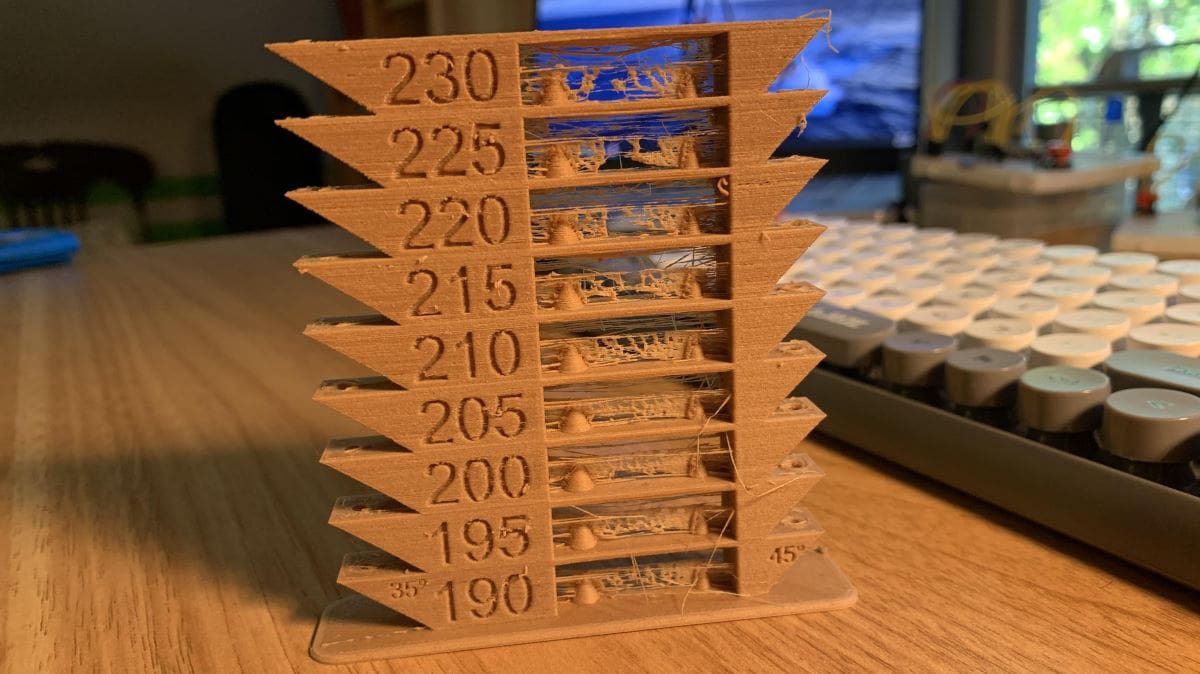
Wood PLA is generally considered more difficult to print than regular PLA due to the special additives used. Below are a few helpful tips for achieving successful 3D prints in wood PLA filament:
- Increase retraction settings: Wood PLA is notorious for stringing, which occurs when over-extruded plastic stays attached to a model. You can combat stringing by increasing the retraction speed and distance in your slicer settings.
- Use a steel nozzle: Many wood PLA filaments contain abrasive additives that can quickly degrade a standard brass nozzle, leading to clogs, jams, and other catastrophes. Switching to a steel nozzle, such as a MicroSwiss A2 hardened steel nozzle, is recommended. Some users also suggest increasing your nozzle size above 0.4 mm (e.g. 0.5 mm).
- Increase cooling: Unlike some filaments (e.g. ABS), wood PLA requires an active part cooling fan for successful prints. This prevents droopy overhangs, as well as other issues such as excessive stringing. Make sure your part cooling fan (different from the hot end fan) is turned on and is set above 0% in your slicer.
- Find the best nozzle temperature: To further prevent stringing as well as ensure a high-quality 3D print, you should consider printing a temperature tower. This will help you identify the optimal nozzle temperature to print your wood PLA filament with.
Following these tips can significantly improve the quality of your 3D prints. However, it’s still important to follow other 3D printing best practices, such as leveling the bed and calibrating your printer to ensure successful prints.
Considerations
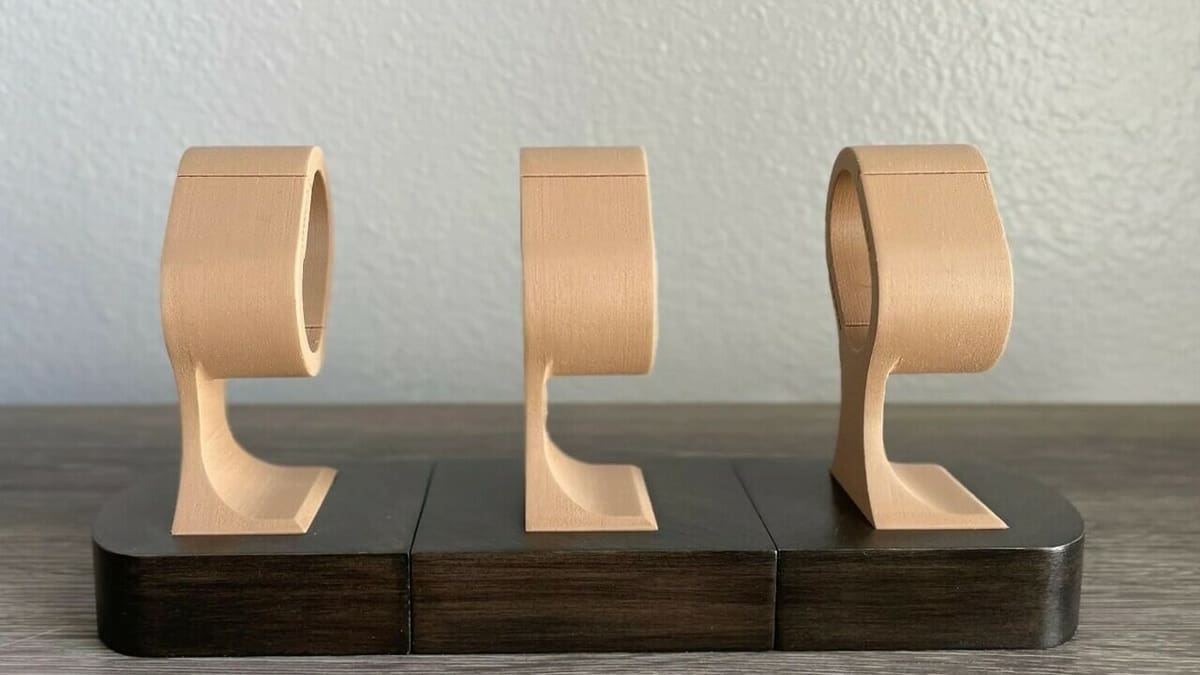
Before we dive into the best wood PLA filaments on the market, it’s important to go over what factors we considered when choosing which options made the cut.
- Rating and reviews: First, and perhaps most importantly, we looked at the rating and reviews for each product. All of the options we selected have a 4+ star rating and glowing reviews, compiled from the different resellers. Of course, the rating alone for any product isn’t always representative of the product quality, so we didn’t rely exclusively on this metric.
- Wooden look and composition: Second, we reviewed how much of a wood-like finish the wood PLA filaments produced by looking at official pictures and those shared in users’ reviews. We also considered the woodfill composition – the actual percentage of wood inside the filament – of the options listed. Additionally, we did our best to include a diverse set of wood PLA filaments that cover a wide range of colors and textures.
- Ease of use: Lastly, we evaluated the printability of the wood PLA filaments by reviewing a mix of user reviews and listed printing specifications (e.g. nozzle temperature, build plate adhesion, etc.) for each filament. When possible, we’ve noted what filaments are known for specific printing malfunctions (e.g. stringing).
Now that you know a bit about wood PLA, how to print it, and what to look for, let’s dive into the best options! Note that we didn’t list them in any particular order.
Protopasta
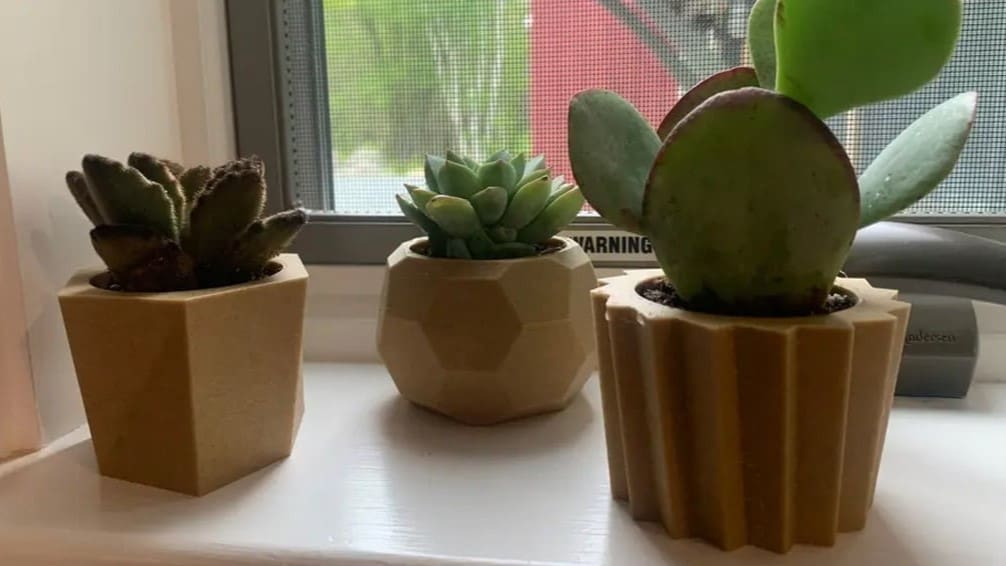
Protopasta is a well-known and respected manufacturer of premium filaments. Founded in 2013, this company focuses on producing biodegradable, reusable, and recyclable materials.
In addition to a realistic wood look, their high-quality Matte Fiber Wood HTPLA provides good bed adhesion. These colors are enhanced with small gold and black flecks to resemble real wood even more. Users are happy with the results and report that they don’t have to do a lot of tweaking to their slicing profiles when printing this filament. The only downside they noted is experiencing more stringing compared to normal PLA. This filament is available in a variety of wood shades, including walnut, mahogany, olive, and more.
- Composition: Not specified
- Colors: Walnut, mahogany, daffodil, olive
- Diameter: 1.75 mm
- Price per kg: ∼$60 (500-g spool at ∼$30)
- Printing temperatures: 205 °C (hot end), 60 °C (bed)
FormFutura
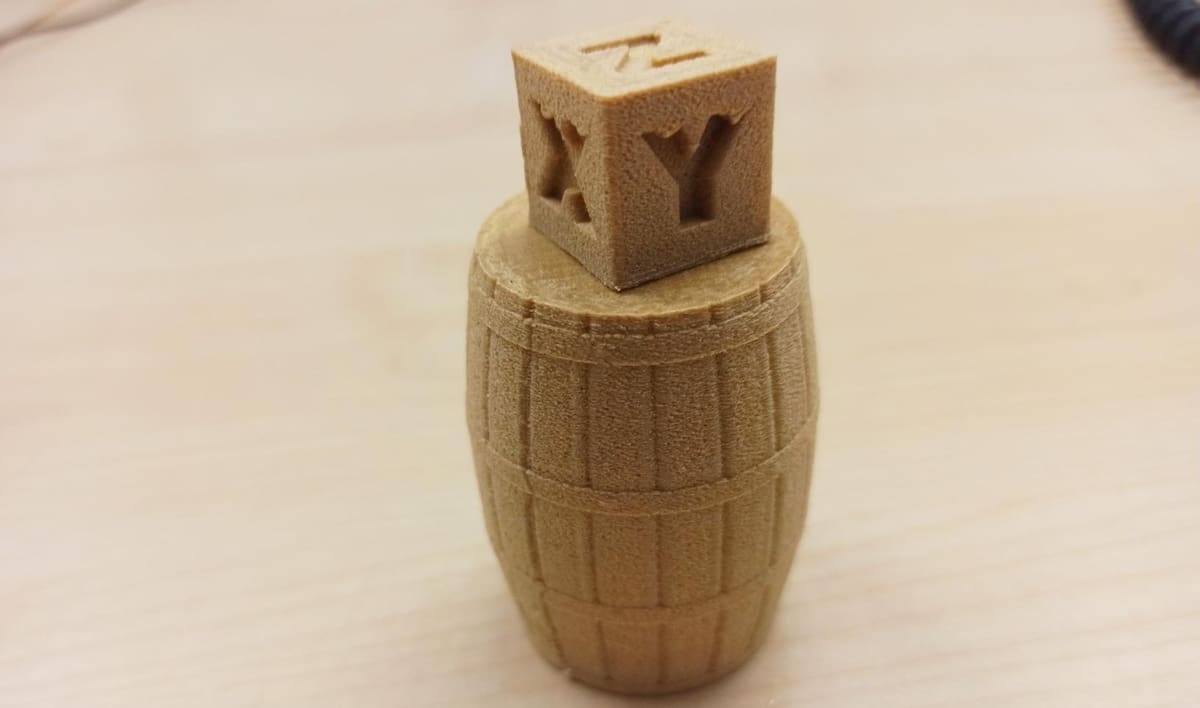
FormFutura is a Dutch filament manufacturer that offers a range of wood filaments called EasyWood. It comes in seven different colors and is claimed to be a warp-free filament.
While there are other budget-friendlier options on this list, the large selection of colors makes this filament a rather alluring choice for newcomers to the world of 3D printing wood.
- Composition: 60% PLA, 40% wood
- Colors: Pine, cedar, olive, coconut, willow, ebony, birch
- Diameters: 1.75 mm, 2.85 mm
- Price per kg: ∼$70 (500-g spool at ∼$35)
- Printing temperature: 210-230 °C (hot end), 0-60 °C (bed)
ColorFabb: WoodFill & CorkFill
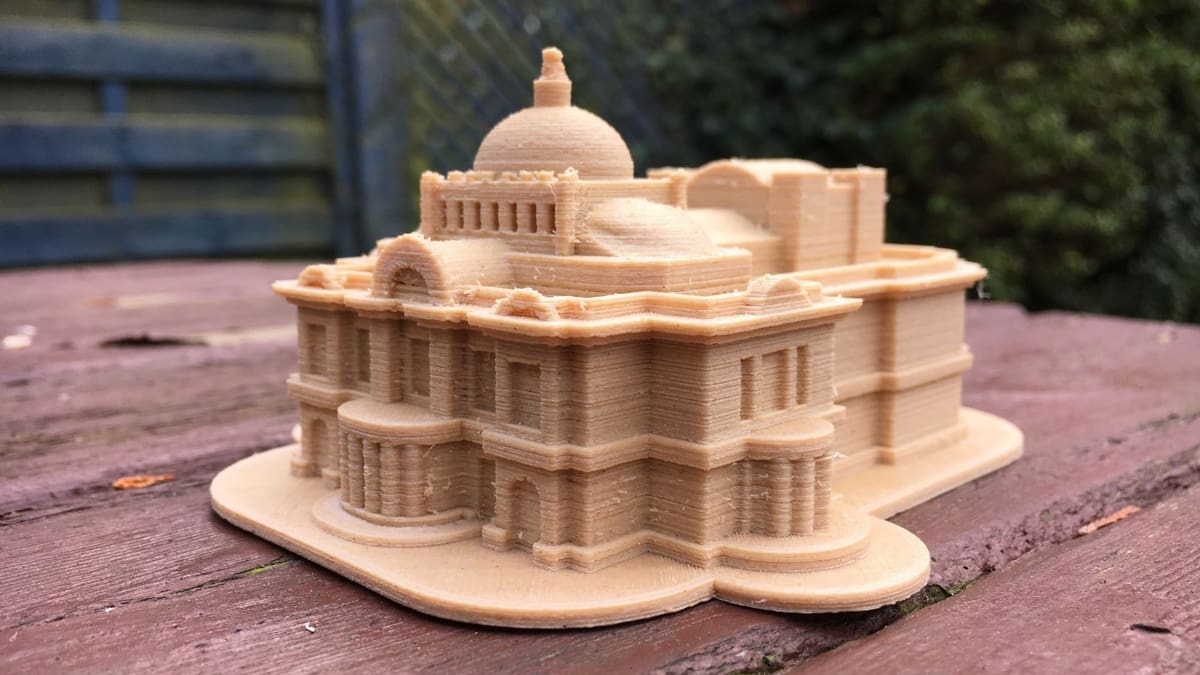
Arguably one of the most exclusive FDM filament manufacturers is the Dutch firm ColorFabb. ColorFabb’s filaments are among the most expensive on the market, but they’re certainly worth it. As you’d expect from a premium filament, the surface finish of the final parts is stunning. Plus, the filaments smell nice and are relatively easy to print with.
If you wish to post-process your parts printed with either CorkFill or WoodFill, you can freely do so. Both of the filaments are easily sanded and can therefore provide an even better surface finish.
- Composition: 70% PLA, 30% wood
- Colors: Pinewood, cork
- Diameters: 1.75 mm, 2.85 mm
- Price per kg: ∼$62 (WoodFill, 600-g spool at ∼$37); ~$54 (CorkFill, 650-g spool at ∼$30)
- Printing temperatures:
- WoodFill: 195-220 °C (hot end), 0-60 °C (bed)
- CorkFill: 210-230 °C (hot end), 0-60 °C (bed)
Fiberlogy
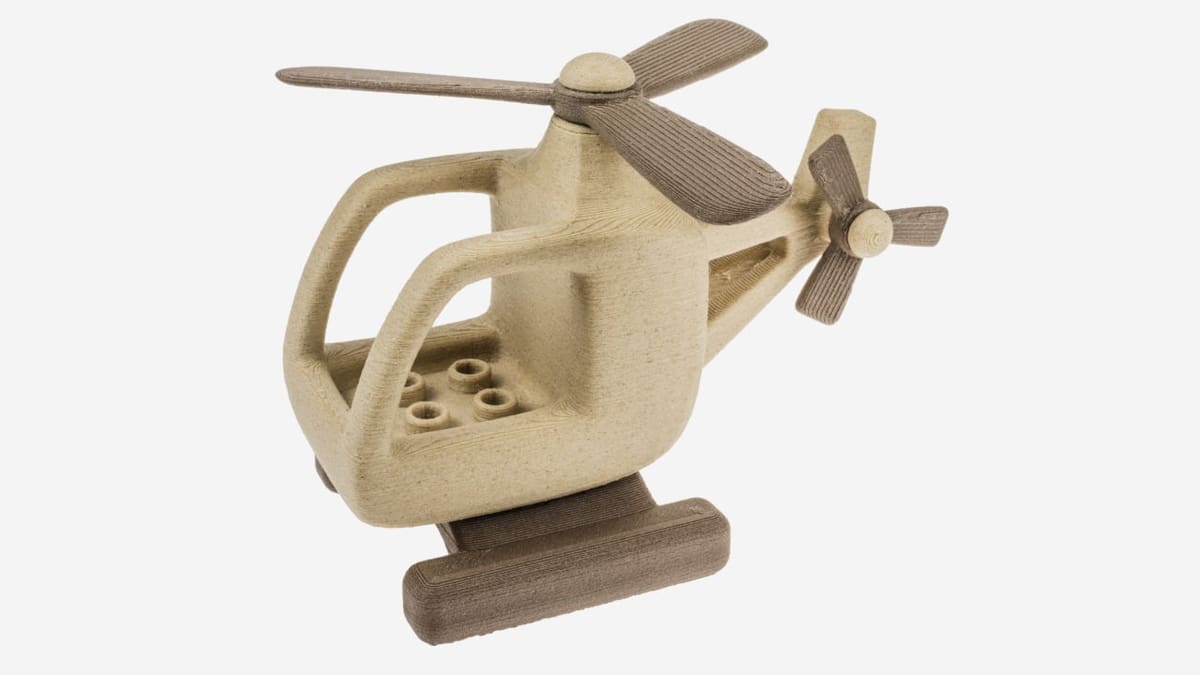
FiberWood comes from Fiberlogy, another company specializing in 3D printing filaments. FiberWood is available in six colors, some with a more “natural” appearance than others. Nonetheless, FiberWood is a great wood PLA filament that Fiberlogy recommends for printing toys, containers, and other models you might want to make wood-like.
The manufacturer states that the filament maintains a diameter tolerance of just ±0.02 mm, which is impressive and indicates that you shouldn’t run into hot end clogs when printing FiberWood. It’s also worth pointing out that you might need to use a bed temperature slightly higher than normal PLA, per Fiberlogy’s printing recommendations (70 °C). Other than that, FiberWood should be fairly easy to print.
- Composition: 70% PLA, 30% wood
- Colors: White, natural, carmine, brown, black, green
- Diameters: 1.75 mm, 2.85 mm
- Price per kg: ∼$60 (750-g spool at ∼$45)
- Printing temperatures: 190-210 °C (hot end), 50-70 °C (bed)
Fillamentum
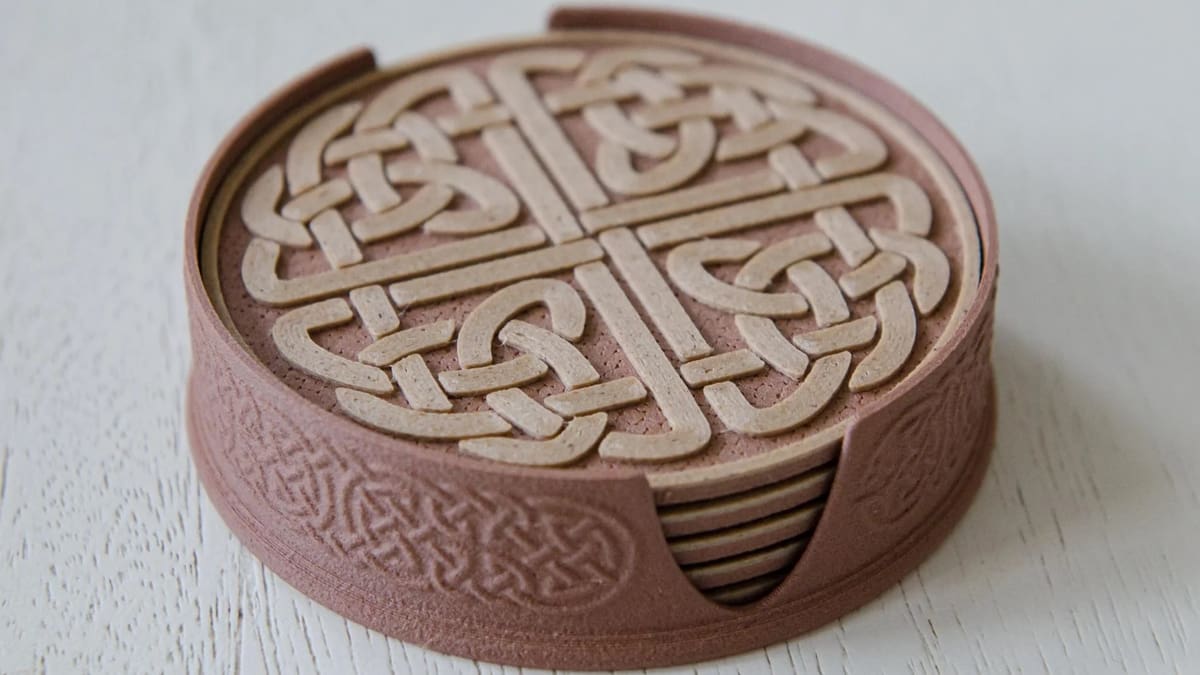
Fillamentum’s Timberfill is a PLA-based, 100% biodegradable wood filament. As with the brand’s other filament offerings, Timberfill has an excellent surface finish, making the parts really look like they’re carved out of wood.
Besides offering great mechanical properties for a wood filament, Timberfill also does a pretty decent job of hiding the layers. Available in eight colors, you have plenty of options to choose the look of the final printed parts.
- Composition: 70% PLA, 30% wood
- Colors: Champagne, cinnamon, rosewood, light wood, southern pine, charcoal, terracotta, red heart
- Diameters: 1.75 mm, 2.85 mm
- Price per kg: ∼$60 (750-g spool at ∼$45)
- Printing temperatures: 165-185 °C (hot end), 40-55 °C (bed)
Filamentive
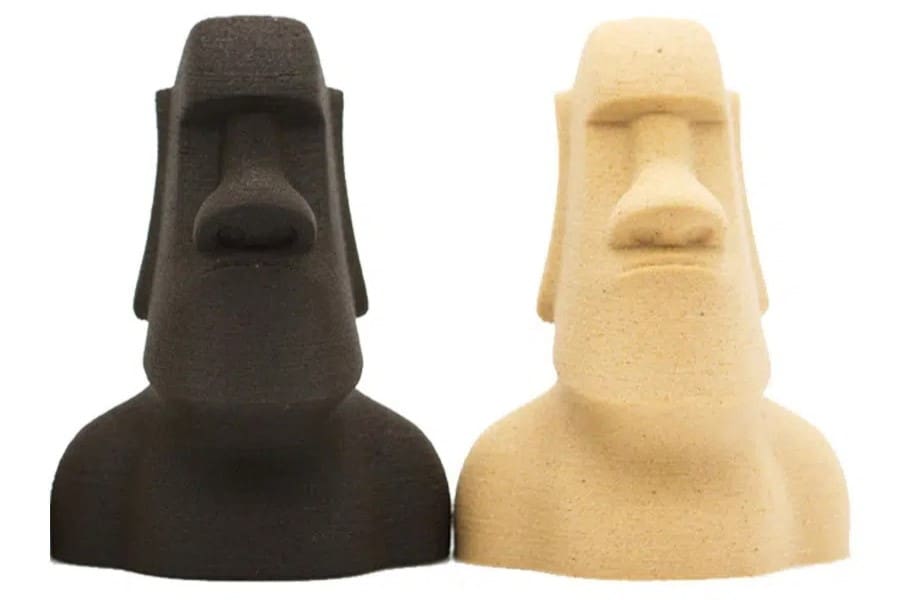
Filamentive is a pioneer in eco-conscious filaments, offering a wide range of filaments made from recycled materials. Since the company’s philosophy is all about the importance of recycling, the filament comes on a cardboard spool inside a cardboard box, all of which can be recycled! Filamentive offers two different colors of wood filament.
Looking at the reviews of the Filamentive wood filaments reveals positive customer feedback. Lots of people seem to compliment this filament for printing like butter, so you can be confident it’s a pleasant experience to print with!
- Composition: 60% PLA, 40% wood
- Colors: Light, dark
- Diameters: 1.75 mm, 2.85 mm
- Price per kg: ∼$60 (750-g spool at ∼$45)
- Printing temperatures: 200-230 °C (hot end), 0-60 °C (bed)
Polymaker
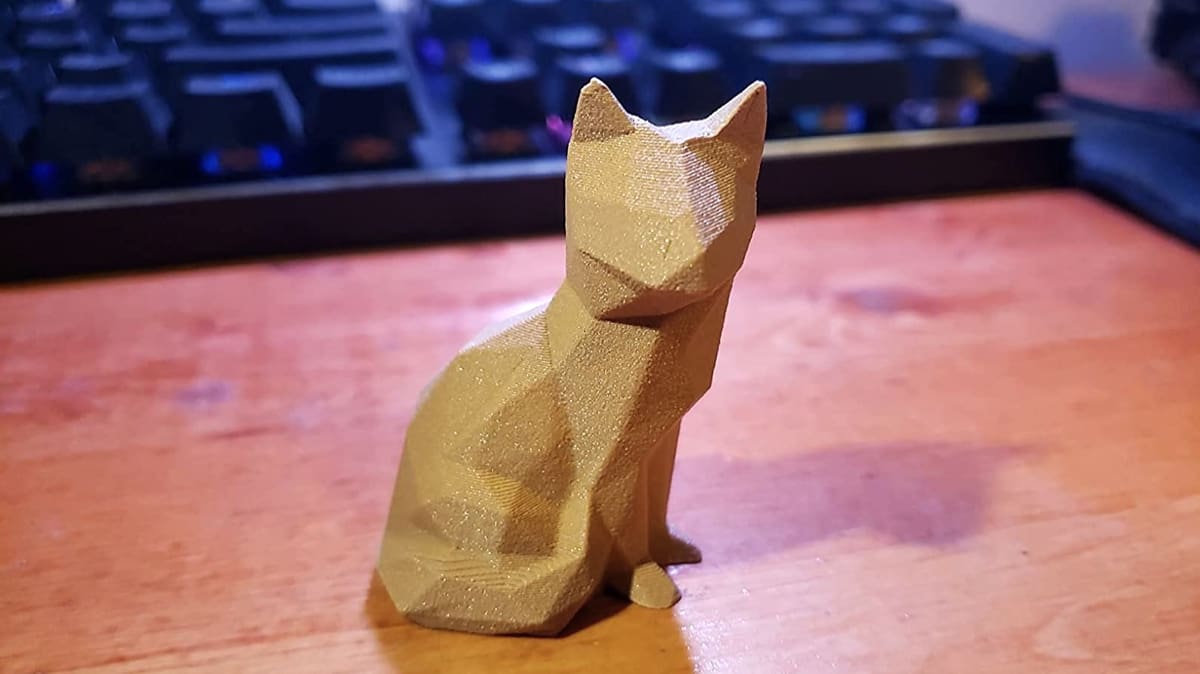
Polymaker is another popular 3D printing filament manufacturer, and PolyWood is the name of their line of wood PLA filament. PolyWood comes in both a 1.75- and 2.85-mm diameter, but there’s only one color for this filament: a light-colored wood that looks impressively natural.
PolyWood is an unusual inclusion on this list as it doesn’t actually contain any wood fibers. Instead, a special “foaming” process was used to integrate the properties of wood into PLA plastic. As a result of this manufacturing technology, their wood filament is about 35-40% less dense than regular PLA filament, mimicking the density and appearance of wood.
Judging by the many online reviews, users seem to like the texture and surface appearance that PolyWood yields on prints. However, it’s worth noting that this filament is a bit expensive, costing around $50 per kilogram.
- Composition: Foamed PLA
- Color: Wood
- Diameters: 1.75 mm, 2.85 mm
- Price per kg: ∼$50 (600-g spool at ∼$30)
- Printing temperatures: 190-210 °C (hot end), 25-60 °C (bed)
eSun
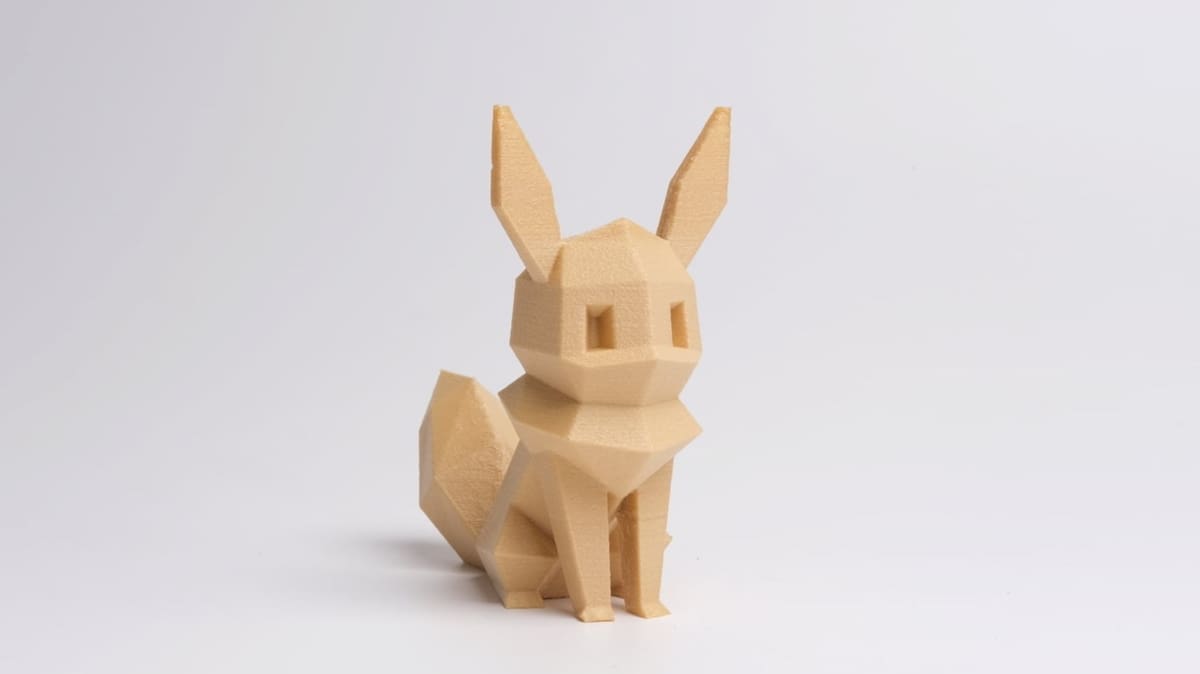
eSun is another well-known brand in the 3D printing world, offering a wide range of printing materials that cater to various needs. Popular filaments include PLA, PCL, ABS, and PETG, as well as wood PLA.
This filament uses a similar “active foaming technology” to that of Polymaker in order to reduce the density of PLA and create a wood-like texture without actually containing wood. Nevertheless, eSun claims the filament boasts a high success rate and nice surface finish, resulting in precise and beautiful creations.
The relatively low price of this filament is perfect for experimenting with stunning wood-like textures for art projects, toys, vases, and more. Plus, eSun mentions that the filament has low warping and tight diameter tolerance, ensuring consistent feeding and stable prints. However, the filament is only available in a natural wood shade.
- Composition: Foamed PLA
- Color: Natural
- Diameter: 1.75 mm
- Price per kg: ∼$20
- Printing temperatures: 210-230 °C (hot end), 45-60 °C (bed)
Eryone
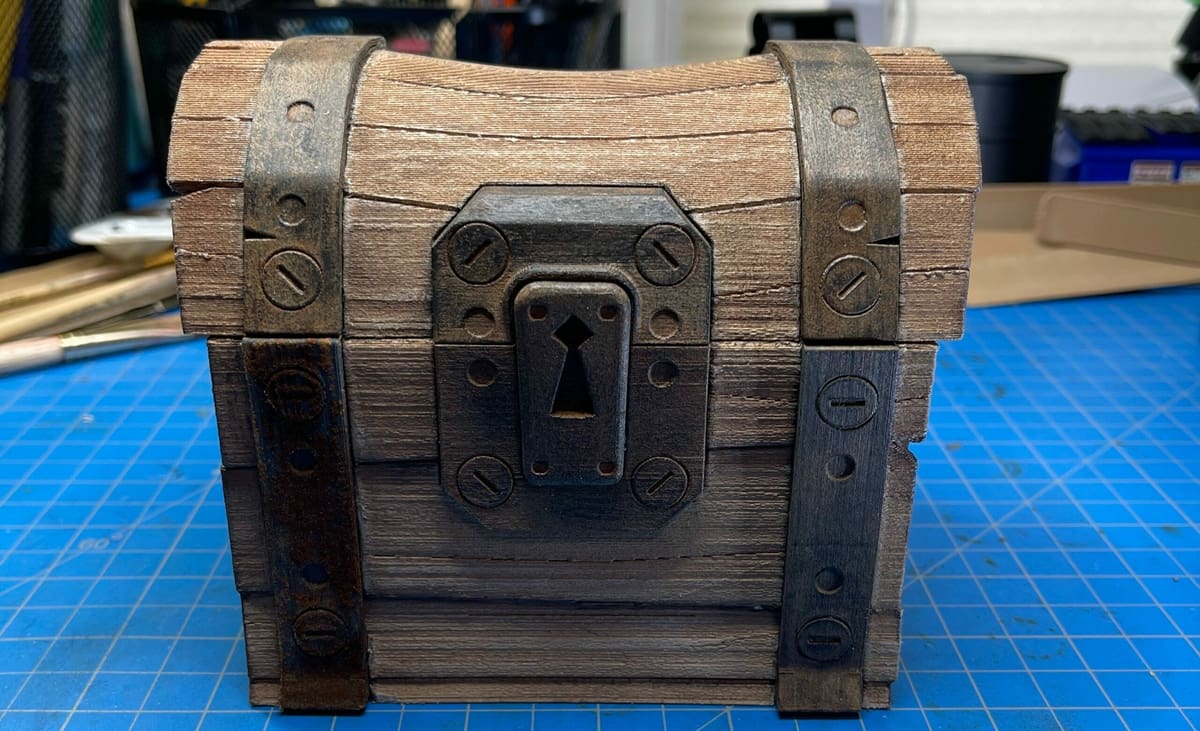
Available in two colors, including light and deep wood, Eryone’s Wood PLA filament has a realistic wood-like texture that’s perfect for a wide range of applications. You can create sculptures and functional objects with an organic look and feel.
Eryone claims this filament has an accuracy of ±0.03 mm. This ensures the filament is easily and consistently fed through the printer, resulting in precise and detailed prints.
The company also mentions that the filament is bubble- and tangle-free, ensuring a seamless printing experience. This filament is designed to work with a wide range of 3D printers, so odds are it will be compatible with your printer.
- Composition: 80% PLA, 20% wood
- Colors: Light, deep
- Diameter: 1.75 mm
- Price per kg: ∼$33
- Printing temperatures: 190-220 °C (hot end), 55-70 °C (bed)
Hatchbox
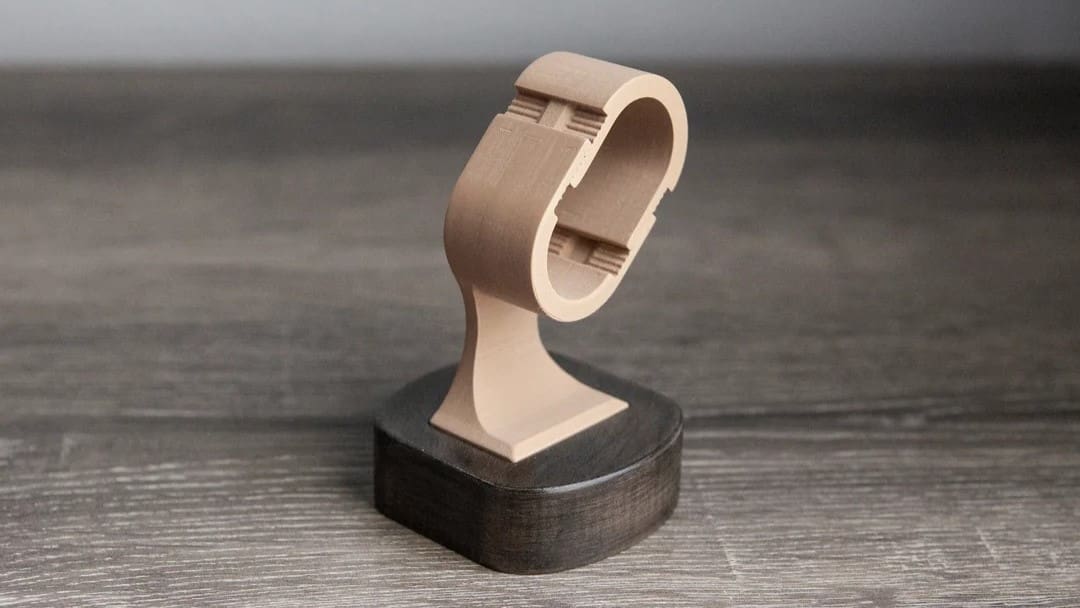
Hatchbox is quite a popular name in the filament world, so it’s not surprising that the company is competing for a piece of the cake in the wood filament market. What’s great about Hatchbox’s wood filament is that it can be easily sanded and doesn’t necessarily require a heated bed to print with it.
Smells nice, prints nice, and looks nice, all for a reasonable price. What more could you ask for?
- Composition: 60% PLA, 40% wood
- Colors: Wood, black, brown, white, gray
- Diameters: 1.75 mm, 3.00 mm (wood color only)
- Price per kg: ∼$31
- Printing temperature: 180-220 °C (hot end), heated bed not required
Isanmate
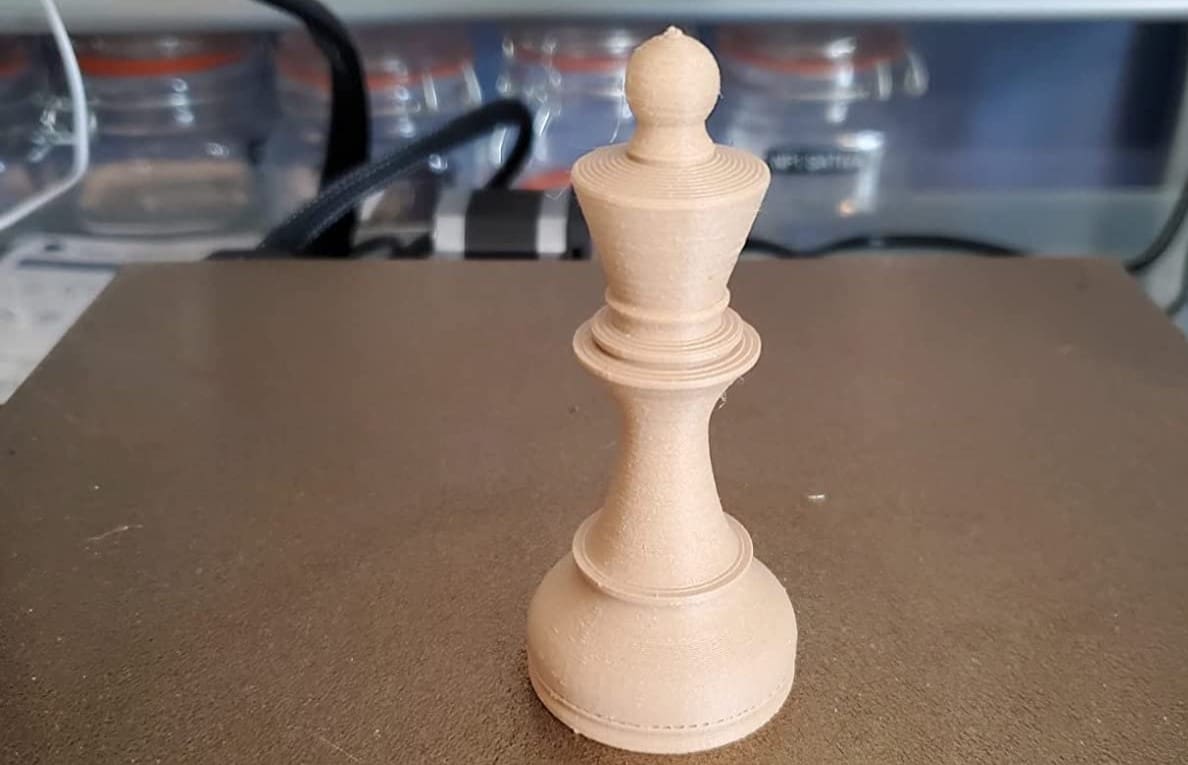
If you’re on the quest for a 3D printing filament that will add an earthy touch to your creations, Isanmate’s PLA-based wood filaments are worth exploring. Made with 20% wood powder, this filament offers a beautiful, natural texture that’s sure to impress. There are five color options to choose from, including red wood and ebony.
Isanmate is a trusted provider of filament for various industries, and just like their other filament offerings, you can expect these wood-based filaments to have a very high tolerance.
However, don’t just take their word for it. The positive customer reviews mention excellent layer bonding and strength. Whether you’re creating a decorative piece or a functional object, Isanmate’s wood filaments should deliver nice results.
- Composition: 80% PLA, 20% wood powder
- Colors: Ebony, red wood, sandal wood, white pine, yellow pear
- Diameter: 1.75 mm
- Price per kg: ∼$31
- Printing temperatures: 190-220 °C (hot end), 50 °C (bed)
Creality
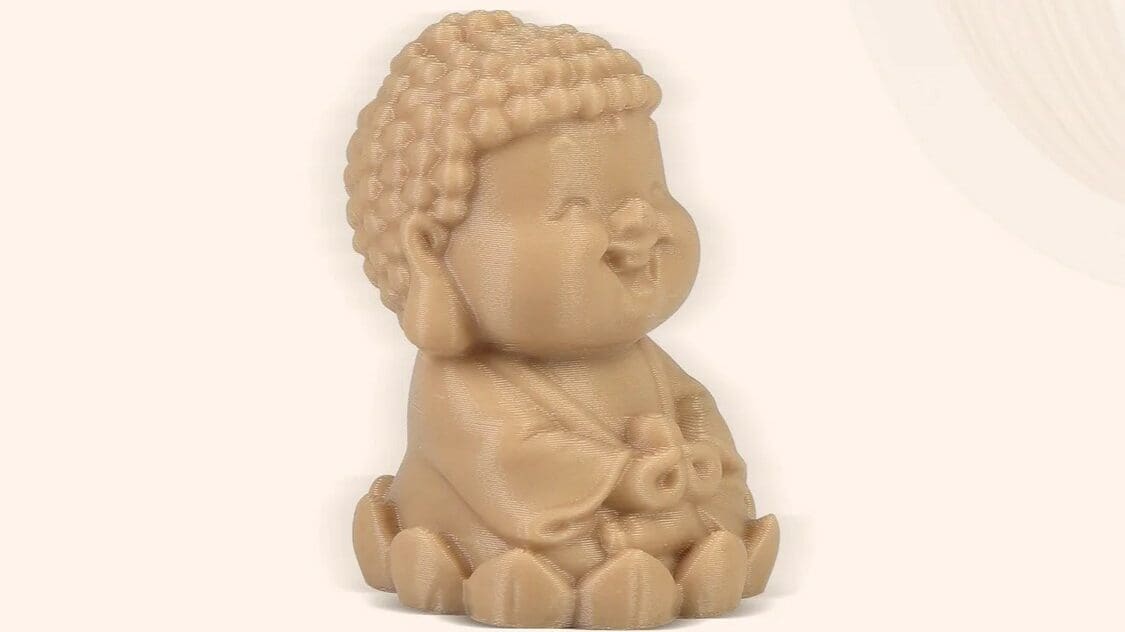
For a natural look, CR-Wood filament from Creality definitely delivers. This filament combines PLA with wood particles to create a realistic texture that looks right at home in a forest. While the color may be a bit lighter than natural wood, it still offers that unmistakable wood grain.
However, it’s not just about looks. Creality claims this filament also delivers excellent printing stability with low shrinkage, so you can expect warp-free and clog-free prints every time. Plus, it’s made with environmentally friendly materials.
While CR-Wood filament is specifically calibrated to pair with Creality printers, it has wide compatibility, so you can use it with a variety of different machines.
- Composition: 60% PLA, 40% wood
- Color: Premium wood
- Diameter: 1.75 mm
- Price per kg: ∼$20
- Printing temperatures: 190-230 °C (hot end)
Amolen
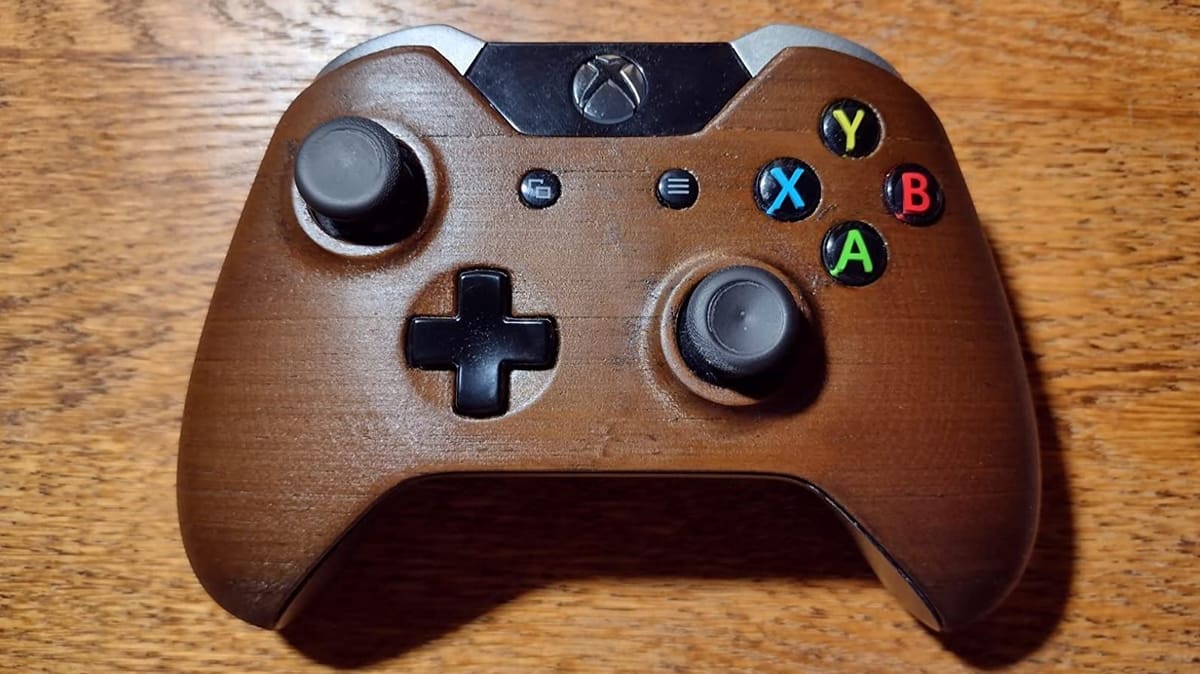
Amolen is a manufacturer of a wide variety of special 3D printing filaments, including multicolor, food-safe, and of course, wood PLA. Amolen’s wood PLA comes in nine colors, each made to resemble a different type of wood, including walnut, bamboo, rosewood, redwood, ebony, and “regular” wood. And, if you can’t limit yourself to just one wood color, they also sell multi-packs that contain smaller spools of multiple colors.
Amolen states that their wood filaments contain 30% wood fibers, which makes sense considering how much the prints made in the filament look like real wood. The manufacturer also mentions that the filament shouldn’t run into any warping, clogging, or bubbling during the printing process. These claims are supported by the many reviews where users mentioned that they achieved high-quality prints without much tuning and with few issues.
- Composition: 70% PLA, 30% wood
- Colors: Walnut, bamboo, rose wood, red cedar, ebony, tigerwood, grain wood, yellow pearwood, cherry
- Diameter: 1.75 mm
- Price per kg: ∼$30
- Printing temperatures: 190-220 °C (hot end), 0-50 °C (bed)
Priline
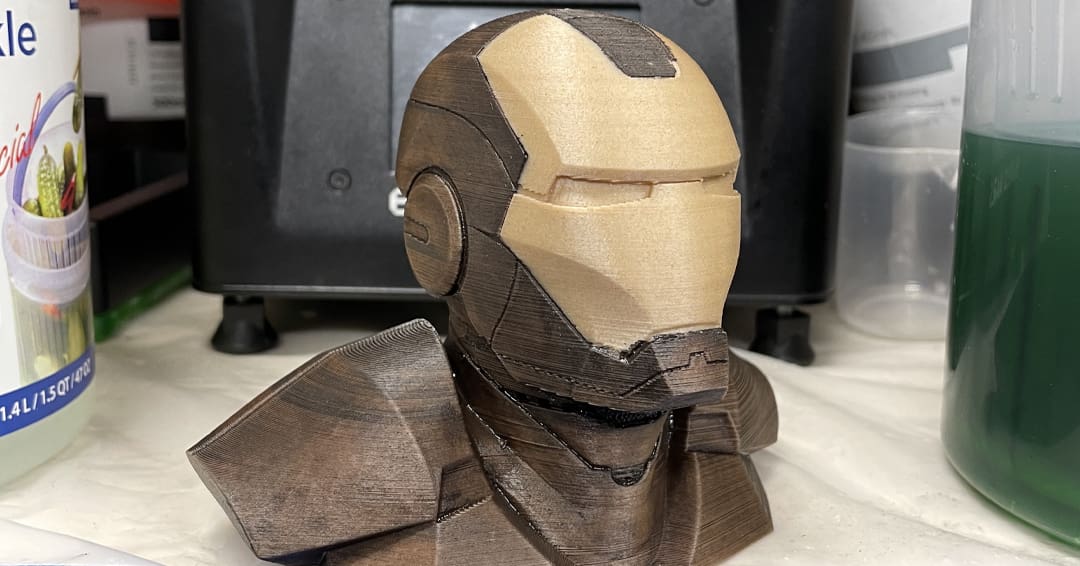
Priline is a company that has been offering a few high-quality filaments, including wood PLA, for more than 10 years. You can choose between dark, light, and rosewood shades. In addition, you can handle these prints in the same way as real wood, so you can nail, drill, engrave, and paint them.
To have the best printing experience, the manufacturer suggests using a layer higher than 0.2 mm and a nozzle larger than 0.6 mm to avoid clogs. Users also suggest using a slightly higher temperature between 210 and 240 °C. Overall, makers appreciate this filament, giving it a 4.4-star rating on Amazon.
- Composition: Not specified
- Colors: Light, dark, rosewood
- Diameter: 1.75 mm
- Price per kg: ∼$22
- Printing temperatures: 200-230 °C (hot end), 0-50 °C (bed)
Sunlu
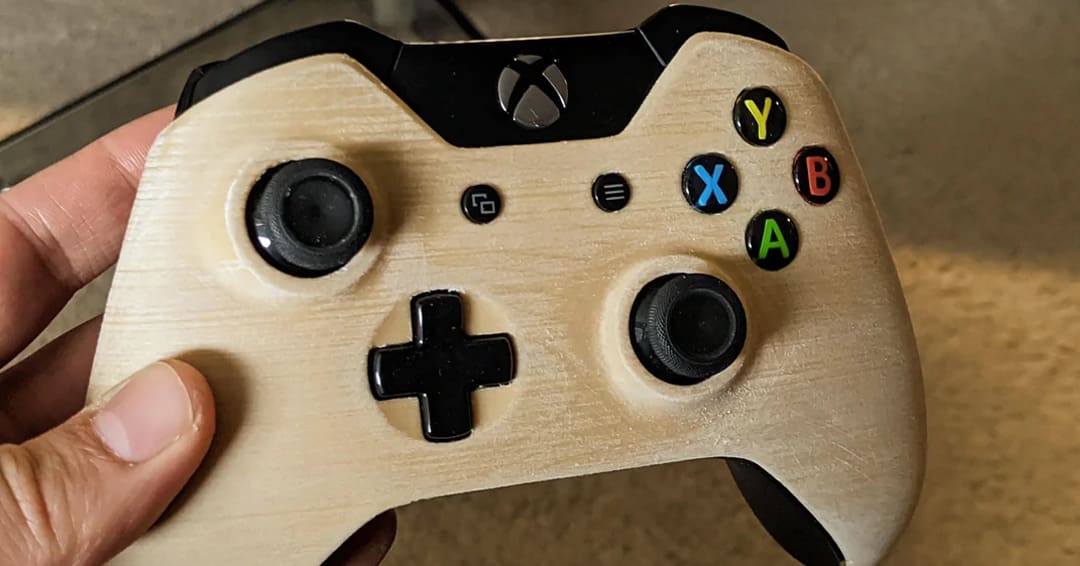
Founded in 2013, Sunlu is a popular manufacturer offering both resin and FDM filament, with around 40 product lines at the moment. Sunlu offers a long list of different filaments that have proven to be high quality. With a 0.02-mm tolerance, you can be sure that your 3D printer can reliably print their filament.
Sunlu’s wood filament includes 20% wood fiber, and the parts look remarkably like real wood. Users are generally quite happy with the results. They do suggest turning off retraction since the filament is softer than regular PLA. While recommends setting the hot end temperature between 200 and 220 °C, one user achieved great results when printing this filament at 180 °C.
- Composition: 80% PLA, 20% wood
- Color: Light
- Diameter: 1.75 mm
- Price per kg: ∼$27
- Printing temperatures: 200-220 °C (hot end), 50-65 °C (bed)
License: The text of "The Best Wood PLA Filaments" by All3DP is licensed under a Creative Commons Attribution 4.0 International License.
CERTAIN CONTENT THAT APPEARS ON THIS SITE COMES FROM AMAZON. THIS CONTENT IS PROVIDED ‘AS IS’ AND IS SUBJECT TO CHANGE OR REMOVAL AT ANY TIME.

